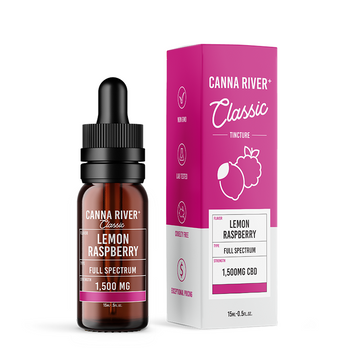Savvy farmers find innovative ways to maximize their yields and ensure quality as the CBD industry grows. Growing Cannabidiol requires techniques that focus on attentiveness and precision, such as constant vigilance of the product’s growth, climate control, soil adaptation, and proficiency in harvesting at optimal times. Advanced farming techniques have been developed and implemented to ensure the highest purity and potency of Cannabidiol products, providing consumers with a safe and reliable source, like CBD oil.

7 Innovative Organic Farming Techniques to Grow CBD
Organically growing CBD can be a rewarding and fulfilling experience for those interested in the many benefits of hemp. Growing your hemp organically creates an opportunity to produce a sustainable product without unwanted chemicals and synthetic materials. Hemp growers have tapped into crop rotation, compost and crop covers, insect repellents, natural weed control methods, and minimal water usage to succeed in organic hemp farming. With proper maintenance and thoughtful planning, sources of contamination can be minimized or completely avoided, leading cannabis farmers down the path to an organic Cannabidiol product.
1. Cover Cropping and Green Manuring
Cover cropping and green manuring are increasingly popular in organic farming of CBD, the naturally occurring compound found in hemp. During this process, plants or wastes are grown on top of the soil, composted, or incorporated into the soil to increase its fertility and enrich it with nutrients. This can often result in increased yields for a wide range of soil-dependent crops, such as hemp, allowing farmers of all scales to generate higher Cannabidiol from fewer plants. Cover cropping and green manuring can reduce weed infestations by competitively growing preventative crops while improving field biodiversity. This innovative approach is one of the most sustainable methods for cultivating CBD while mitigating environmental impact.
2. Composting
Composting is an organic farming method growing in popularity among CBD farmers. By utilizing the growth loops of microorganisms, compost piles can produce natural fertilizers and simultaneously reduce the waste in landfill from organic matter that would otherwise go to waste. Regarding sustainability and cost-effectiveness, composting is an excellent choice for CBD farmers using green practices. This agricultural technique can help increase yields and provide better crops with higher essential nutrients. As the demand for organically grown hemp and cannabinoid products continues to rise, many farmers are now turning to compost to meet such needs.

3. Intercropping
Intercropping is an innovative organic farming technique used to grow CBD efficiently. This farming system involves planting two or more crops in the same field, giving farmers greater stability as every crop does not require the same environmental conditions for successful growth. This allows crops to utilize space more economically and benefit from natural pest-deterring strategies such as multi-tier canopies, canopy rotation, and interplanting of vegetables and flowers with vastly different growing habits. Intercropping helps reduce input costs such as soil preparation, fuel usage, water conservation, pest control, and management of nutrients. Furthermore, this technique promotes weed control without chemical intervention, thus helping farmers save time and effort while creating sustainable harvests.
4. Water Management
Water Management is an innovative technique for organic farming, particularly when it comes to growing CBD. This method allows farmers to control the water used for each crop and manage the water levels surrounding their plants. This produces healthier and higher-quality Cannabidiol products in less time than a conventional approach. As a result, Water Management offers an effective way to grow CBD and saves valuable resources such as water and money while still producing outstanding results.
5. Integrated Pest Management
Integrated Pest Management is a great, sustainable farming technique that has proved to be highly beneficial in growing CBD. It’s a type of organic farming and relies on natural methods to keep pests in check while protecting the environment. IPM allows farmers to customize their pest control systems based on their individual needs and situations, thus giving producers the required flexibility. This innovative approach has become increasingly popular for growing Cannabidiol due to its effectiveness in producing high-quality crops without potentially damaging chemicals. It provides greater yields and integration of diverse crop varieties, drastically reducing farmers’ costs. With an ever-growing demand for organic and sustainably produced products, integrated pest management will continue to be seen as one of the top methodologies for successfully growing CBD.

6. Crop Rotation
Crop rotation is a method of innovative organic farming employed to produce CBD. Being a plant-based ingredient, Cannabidiol needs soil rich in nutrients for good growth. To ensure this quality, crop rotation helps create a balanced utopia for plants by alternating or rotating the crops grown in each region yearly. This practice enables maximum absorption of multiple types of organic matter left behind when one crop is grown in an area. Such nutrients provide more nourishment to the soil, eventually benefiting all the vegetation and plant life growing there, increasing the potential output and producing good quality Cannabidiol with maximal potency while preserving nature’s resources. Moreover, it not only helps prolong land fertility but also promotes biodiversity on farmland and reduces chemical inputs into the environment so that overall plant-based cannabinoid production can be improved organically.
7. Conservation Tillage
Conservation tillage is an innovative and organic agricultural practice immensely beneficial when producing CBD. This cultivation technique involves leaving the soil intact after harvest without removing all vegetation or tilling the land excessively, reducing soil erosion and encouraging biodiversity. As a result of conservation tillage, water resources are conserved as it allows for more water retention in the soil. This is considered highly beneficial for growing CBD since it requires a steady and consistent source of moisture throughout its development. Farmers can cultivate high-quality crops using this method while cultivating healthy and sustainable ecosystems.
Conclusion
Organic farming techniques can be a great way to produce high-quality CBD, free from the pesticides and other chemicals used in traditional farming methods. By utilizing innovative organic techniques, growers can ensure that their products are of the highest quality and environmentally friendly. Producers can create high-quality Cannabidiol products without sacrificing their commitment to sustainability and environmental impact with careful attention to detail and dedication to these organic practices. Organic farming techniques provide an excellent opportunity for CBD producers to increase the quality of their products while ensuring that they do their part to protect our planet.


